Principal research achievements
- Demonstration that the Sun’s brightening around the peaks of the 11- year sunspot cycle is caused by increased area of bright magnetic faculae in active regions and in the photospheric network (P. Foukal & J. Lean, Ap.J. 302, 826, 1986"; 328, 347, 1988). This explained the paradoxical finding that the brightness of the Sun and many other similar stars increases as the number of dark spots rises.
- Explanation why the magnetic fields of dark spots and bright faculae do not just re-direct the Sun’s heat flow, but instead change solar luminosity due to the unexpectedly efficient storage and very slow re-radiation of the perturbed heat flux. (P. Foukal, L. Fowler, M. Livshits, Ap. J. 267, 863, 1983; W.–H. Chiang & P. Foukal, Solar Phys. 97, 9, 1985"). This explanation is now widely accepted as the mechanism causing luminosity variation of not only the Sun, but of all magnetically active late-type stars.
- Evidence that the Sun darkened, rather than brightened, around the peak of its largest recorded spot cycle, in the late 1950’s (P. Foukal, Ap.J. 815, 9, 2015). This finding that the Sun is poised at the boundary between stars that brighten with increasing activity and those that darken, has implications for climate prediction.
- Prediction of an outward decrease of the Sun’s angular rotation rate by about 5% in a 15,000 km deep layer below the photosphere, caused by conservation of angular momentum in radial motions within this super granular layer (P. Foukal & R. Jokipii, Ap.J. Letts. 199, 71, 1975). The existence of such a shear layer has since been verified by helio-seismic observations.
- Discovery that cool plasma magnetically suspended over sunspots produces the Sun’s brightest non – flaring EUV radiation around the peak of the solar plasma cooling curve (P. Foukal et al., Ap. J. Letts, 193, 143, 1974; Foukal, Solar Physics, 43,317). This raised the question why the atmosphere over the intensely magnetized spots is cooler if magnetic fields heat the corona.
- Discovery that the elongated chromospheric fibril structures around active regions are aligned in opposite directions near a magnetic neutral line rather than connecting across it as implied by the previously assumed magnetic geometry (P. Foukal, Solar Physics, 19, 59, 1971). This indicated that active region filaments form in current sheets and presaged studies of the chirality of the Sun’s field.
- Development of the LaseRad and CryoRad lines of commercially available cryogenic radiometers (e.g. P. Foukal et al., Applied Optics, 29, 988, 1990) used world-wide as primary national irradiance standards, and to establish an accurate scale for solar total irradiance measurements.
- Development of the first imager for bolometric astronomical imaging. Flown on NASA high altitude balloons from Ft Sumner, New Mexico and Antarctica to obtain the first images of the Sun in broad - band light between about 0.32 – 2.5 microns with essentially flat spectral response (P. Foukal & S. Libonate, Applied Optics, 40, 1138, 2001; P. Foukal et al., Ap.J. Letts., 611, 57, 2004).
- Development of the first electrograph for observation of macroscopic electric fields in solar structures. Installed on the 40 cm coronagraph at the National Solar Observatory to investigate fields in prominences and surges (P. Foukal & B. Behr, Solar Physics, 156, 293, 1995).
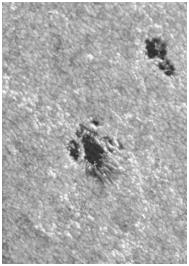
Dark sunspots and bright faculae.
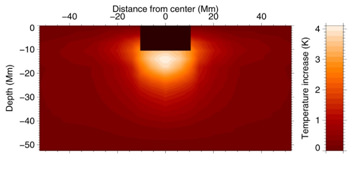
A simulation of heat storage around a sunspot.
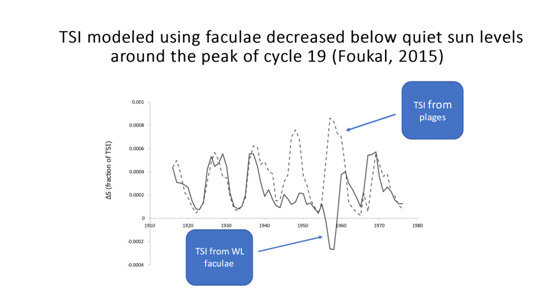
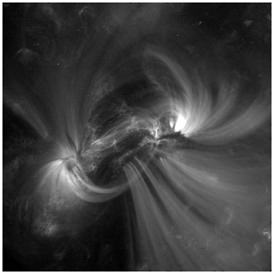
Bright EUV radiation from sunspots.
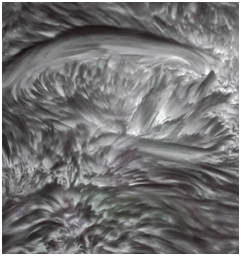
A chromospheric filament and fibrils.
Principal innovations in instrumentation

A LaseRad cryogenic radiometer.
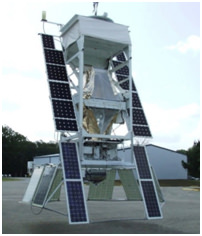
The Solar Bolometric Imager ready for flight.
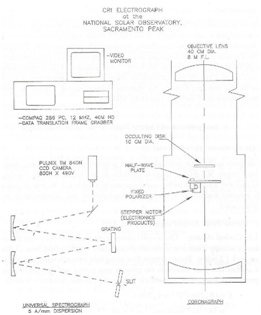
The electrograph used on the NSO coronagraph.